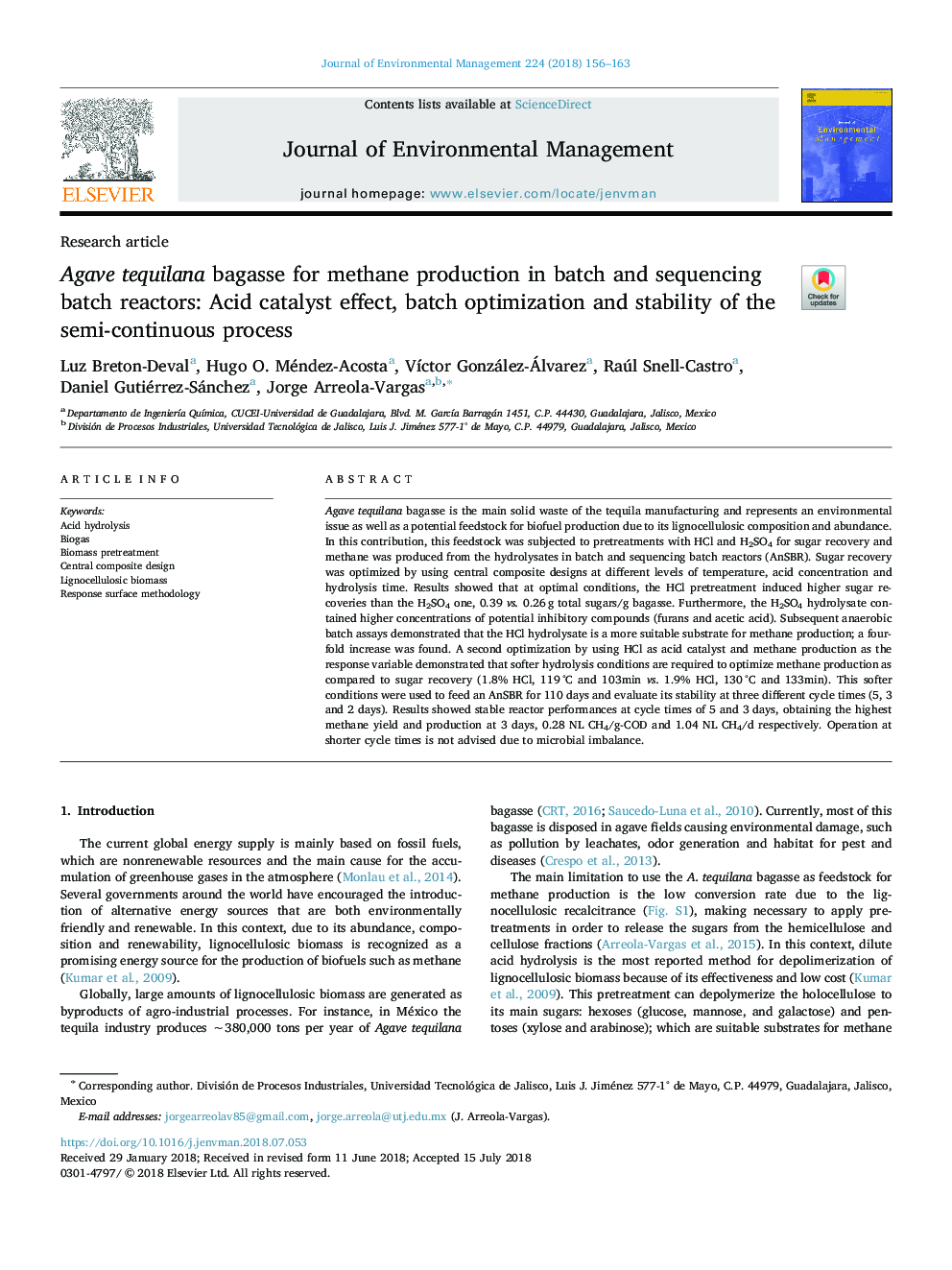| کد مقاله | کد نشریه | سال انتشار | مقاله انگلیسی | نسخه تمام متن |
|---|---|---|---|---|
| 7475582 | 1485194 | 2018 | 8 صفحه PDF | دانلود رایگان |
عنوان انگلیسی مقاله ISI
Agave tequilana bagasse for methane production in batch and sequencing batch reactors: Acid catalyst effect, batch optimization and stability of the semi-continuous process
ترجمه فارسی عنوان
باگاس آگوا تکیلانا برای تولید متان در راکتورهای دسته ای و تکتونیکی: اثر کاتالیزور اسیدی، بهینه سازی دسته ای و پایداری روند نیمه مداوم
دانلود مقاله + سفارش ترجمه
دانلود مقاله ISI انگلیسی
رایگان برای ایرانیان
کلمات کلیدی
هیدرولیز اسید، بیوگاز، پیش درمان زیست توده، طراحی کامپوزیت مرکزی، زیست توده لیگنوسلولوزیک، روش سطح پاسخ،
موضوعات مرتبط
مهندسی و علوم پایه
مهندسی انرژی
انرژی های تجدید پذیر، توسعه پایدار و محیط زیست
چکیده انگلیسی
Agave tequilana bagasse is the main solid waste of the tequila manufacturing and represents an environmental issue as well as a potential feedstock for biofuel production due to its lignocellulosic composition and abundance. In this contribution, this feedstock was subjected to pretreatments with HCl and H2SO4 for sugar recovery and methane was produced from the hydrolysates in batch and sequencing batch reactors (AnSBR). Sugar recovery was optimized by using central composite designs at different levels of temperature, acid concentration and hydrolysis time. Results showed that at optimal conditions, the HCl pretreatment induced higher sugar recoveries than the H2SO4 one, 0.39 vs. 0.26â¯g total sugars/g bagasse. Furthermore, the H2SO4 hydrolysate contained higher concentrations of potential inhibitory compounds (furans and acetic acid). Subsequent anaerobic batch assays demonstrated that the HCl hydrolysate is a more suitable substrate for methane production; a four-fold increase was found. A second optimization by using HCl as acid catalyst and methane production as the response variable demonstrated that softer hydrolysis conditions are required to optimize methane production as compared to sugar recovery (1.8% HCl, 119â¯Â°C and 103min vs. 1.9% HCl, 130â¯Â°C and 133min). This softer conditions were used to feed an AnSBR for 110 days and evaluate its stability at three different cycle times (5, 3 and 2 days). Results showed stable reactor performances at cycle times of 5 and 3 days, obtaining the highest methane yield and production at 3 days, 0.28 NL CH4/g-COD and 1.04 NL CH4/d respectively. Operation at shorter cycle times is not advised due to microbial imbalance.
ناشر
Database: Elsevier - ScienceDirect (ساینس دایرکت)
Journal: Journal of Environmental Management - Volume 224, 15 October 2018, Pages 156-163
Journal: Journal of Environmental Management - Volume 224, 15 October 2018, Pages 156-163
نویسندگان
Luz Breton-Deval, Hugo O. Méndez-Acosta, VÃctor González-Álvarez, Raúl Snell-Castro, Daniel Gutiérrez-Sánchez, Jorge Arreola-Vargas,
